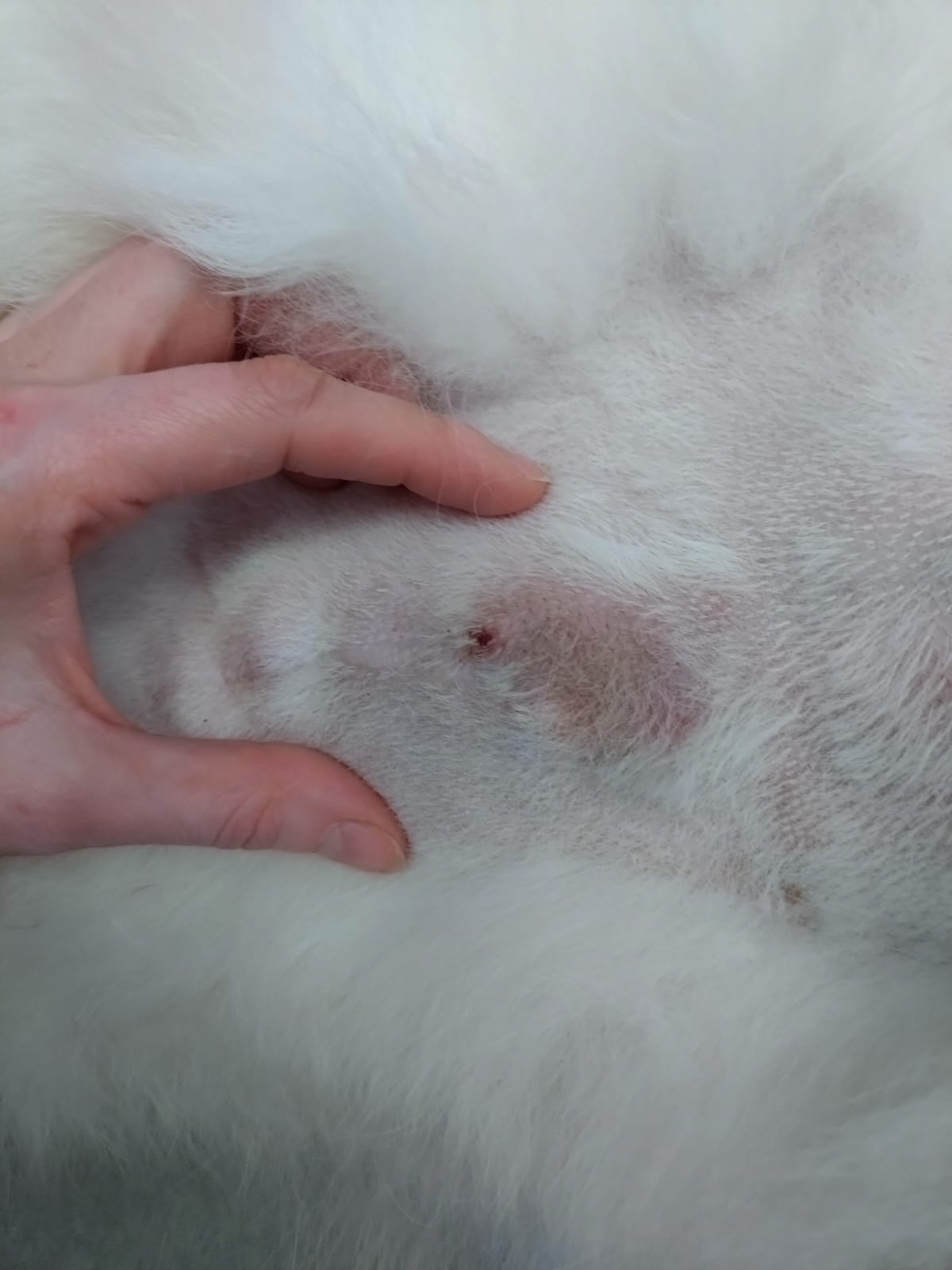🐾 Global Case #2: Intratumoral ClO₂ Therapy for Canine Mammary Adenocarcinoma in Lithuania
Location: Kaunas, Lithuania
Clinic: Siaurio Snauceris Veterinary Clinic
Patient: Samoyed dog, post-surgical recurrence of mammary adenocarcinoma
Date of first injection: June 2025
Background
In this landmark veterinary case, a Samoyed dog previously diagnosed with mammary gland adenocarcinoma underwent surgery to remove the glands. Unfortunately, the cancer recurred locally. The veterinary team at Siaurio Snauceris in Kaunas, Lithuania, became the second clinic in the world to apply intratumoral chlorine dioxide (ClO₂) injection therapy for a malignant tumor in a companion animal.
This marks the second global case of veterinary ClO₂ tumor treatment, and the first ClO₂ injection for a mammary carcinoma in dogs.
Treatment Protocol
The therapy was carried out using three intratumoral injections targeted at the largest and most visibly connected tumor masses beneath the skin. The dog received a single-dose injection into each major site, guided by palpation and visual mapping of the lesion structure.
Drug: ClO₂ injectable solution (prepared per veterinary protocol at 20,000 ppm concentration, as instructed under the clinical guidance of the inventor)
Supportive therapy: Prevomax (anti-inflammatory & pain management)
Sedation/anesthesia: Mild sedation was administered to ensure comfort and precision during the injections
Photographic Timeline
1. Before injection
Multiple subcutaneous masses visible in the left abdominal region. Tumors are palpable, with no skin breakage or visible ulceration.
2. Immediately after injection
Injection sites are clearly marked by puncture points and mild swelling.
3. 24 hours post-injection
Noticeable reddening and localized inflammation are observed. Initial signs of intratumoral response.
4. 48 hours post-injection
Central necrosis emerges at the injection sites, with a dark central zone beginning to form.
5. 72 hours post-injection
Clear demarcation of necrotic area, with visible tissue collapse. The treatment zone is sharply defined.
6. Day 3 general condition
The dog remains alert, responsive, and in good spirits. No signs of systemic toxicity or behavioral change.
🩺 Veterinary Observation
“The response was fast and focused. Within 72 hours, the injected tumor tissue began to collapse with clear necrotic signs. Importantly, the dog tolerated the procedure very well and remained comfortable throughout recovery. This is a promising result.”
— Dr. Inga Jančiūnaitė-Petrėnie, Siaurio Snauceris Veterinary Clinic (Kaunas, Lithuania)
Preliminary Interpretation
Visual Response: Clear tumor core necrosis within 72 hours, with visible separation from surrounding tissue.
Tolerance: No systemic side effects. The animal remains well, eating, walking, and pain-free with supportive care.
Mechanism in Action: The oxidative burst of ClO₂ leads to localized tumor collapse without affecting adjacent healthy tissue.
Significance
This case suggests that intratumoral ClO₂ therapy may be safe and rapidly effective in canine mammary tumors, especially for recurrent or surgically unmanageable lesions. It also reinforces the broad cross-species applicability of this therapy, as previously observed in human trials.
We thank the veterinary team at Siaurio Snauceris Clinic in Kaunas for their trust, precision, and documentation.
📌 If you’re a veterinary oncologist, clinic owner, or pet parent seeking innovative cancer options, please reach out via our website. We’re actively expanding the veterinary ClO₂ treatment network worldwide.
Let’s make visible progress — one tumor at a time.











I so enjoy reading about your work.
Delighted to see this success. Long May it continue.